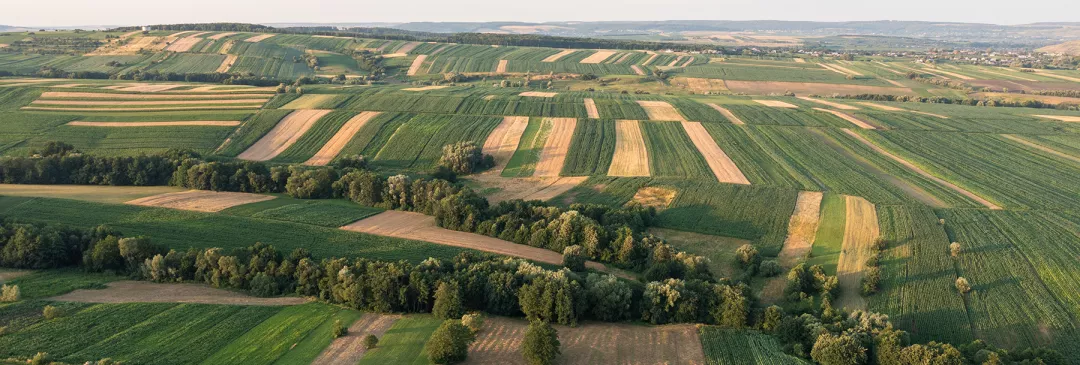Evaluation of the activity results of the Romanian National Rural Development Network in the period of 2016-2020
- Evaluation
- Jobs, Growth and Equality in Rural Areas
- Environment
- Agricultural Productivity
- Climate and Climate Change
- Networking
- Generational Renewal
- Sustainability
- Evaluation
- Economic impacts
- Socio-economic Impacts
The report focuses on the Romanian National Rural Development Network (NRDN) and seeks to identify solutions to improve the quality of NRDN activity during the transition period and for the future National CAP Network post 2020.
- Romania
- 2014-2022
- Cross-cutting impacts


The general objective of the evaluation is to analyse the activity of the National Rural Development Network (NRDN) in Romania in the 2016-2020 period, and the transition year 2021, to identify the most suitable solutions to improve the activity of the NRDN during the transition period and of the future CAP National Network post 2020.
The study focused on the analysis of the NRDN structure from the perspective of adequate human resources and administrative capacities, efficiency and effectiveness of the NRDN activity, as well as the degree of involvement of the relevant actors in ensuring the visibility of the NRDP 2014-2020 measures, including the identification of new techniques and methods of communication and information to the general public. The role of NRDN in encouraging innovation in agriculture, food production, forestry and rural areas was assessed as well. The evaluation report also includes recommendations to improve the NRDN activity in achieving the NRDP objectives, both during the transition period and the next programming period.
The methodological approach consisted of the following techniques: a) content analysis; b) a case study; c) a social network analysis; d) a benchmarking analysis, and e) a descriptive statistical analysis.
The main data sources were semi-structured interviews, three surveys, three focus groups (regional, national and an expert/international focus group) and case studies. The objectives of the evaluation were carried out by answering six evaluation questions. Several judgement criteria were used to answer these evaluation questions including efficiency, effectiveness, relevance and added value.
The indicators used are from the Common Monitoring and Evaluation Framework (CMEF). However, they do not cover data that can provide evidence regarding the results or effects of the NRDN but only regarding their outputs. Although the mechanism used in monitoring the activity of NRDN and its results is in line with EU requirements, it does not allow for the quantification of the effects generated at the level of the 2014-2020 NRDP and collects information in a limited way about the perspective of the NRDN members regarding the results of the network. In the context of the current mechanism used to collect data, the results of the network are difficult to identify and quantify without regular collection of additional data in the framework of the monitoring process.
In terms of effectiveness, the evaluation concludes that the NRDN has made an essential contribution to improving the implementation of the 2014-2020 NRDP, mainly in terms of facilitating access to information for its members. The NRDN directly addresses the multipliers of information (LAGs or professional associations in the agricultural sector) and less to the potential beneficiaries of the programme and other multipliers, such as local public authorities and county agricultural directorates.
The link between each objective of the program and the results of the NRDN’s communication and information actions is insufficiently implemented at the level of the network’s intervention logic.
The network carries out specific activities regarding the promotion of innovation; the most appreciated were the dissemination of good practice examples and the organisation of the Thematic Working Group addressing the theme of research and innovation in rural development.
In terms of efficiency, the human, material and financial resources are sufficient to carry out NRDN activities effectively. The information is transmitted in a timely manner to the interested actors, and the evaluation did not identify situations of information gaps.
The intervention logic of NRDN does not explain the roles of the two institutional structures involved in the implementation of the network’s activity (NRDN within the National Rural Development Program (NRDP) and the NRDN within the Agency for the Financing of Rural Investments (AFRI). Also, it does not address the internal coherence of the NRDN. The NRDN presents a number of drawbacks, such as the lack of a structure to coordinate the NRDN activity as a whole, the lack of coherence in terms of communication with the general public, and confusion among NRDN members regarding the coordination system of NRDN.
In terms of added value, the evaluation concludes that NRDN members do not interact outside the framework created by NRDN events, especially those face-to-face, through e.g., a dedicated tool created by the network (such as a communication platform). Also, generally, the smaller thematic events, considered most effective, bring together members from a single area or region who know each other and already collaborate, and the possibility of interaction through NRDN with other actors with similar interests or from similar sectors of activity but from other parts of the country remains limited.
Author(s)
Qures Quality Research and Support SRL